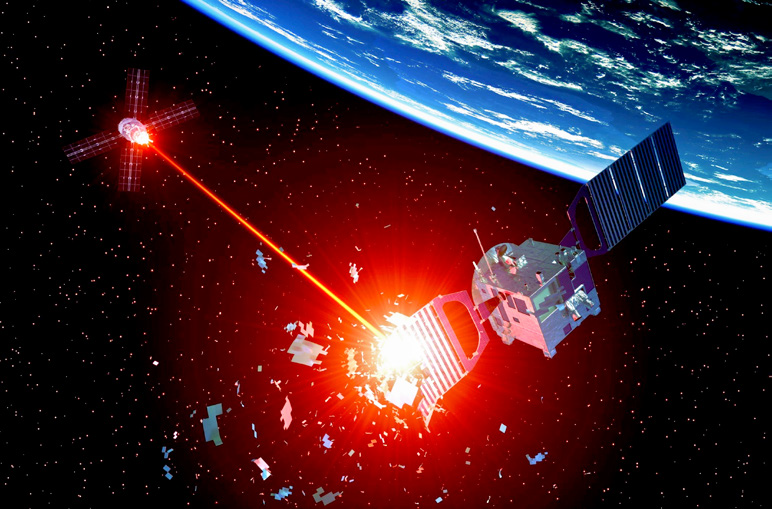Huey Wyche II is the Technical Director at GuardianSat(™) and holds a two-decade background in defense system integration and technical expertise. His knowledge spans the installation, implementation, and instruction of cutting-edge technologies within the Department of Defense (DoD).
During his career,Huey served as the avionics lead for various Special Operations Forces, Personnel Recovery, and Electronic Attack weapons systems across multiple tours supporting Operations ENDURING FREEDOM, EARLY VICTOR, IRAQI FREEDOM, RESOLUTE SUPPORT, and FREEDOM’S SENTINEL.
Notably, Mr. Wyche played a pivotal role in the successful combat fielding of the Avionics Viability Program (AVP) upgrade for the EC-130H “COMPASS CALL” electronic attack weapons systems.
Mr. Wyche is a retired combat veteran who, throughout his service, demonstrated a knack for solving complex problems and earned multiple Commendation Medals for his ability to develop innovative solutions while deployed to combat zones and subjected to hostile fire.
Mr. Wyche’s academic background includes graduating from Embry-Riddle Aeronautical University with a Bachelor of Science degree in Aeronautics, where he focused on Space operations.
Good day, Mr. Wyche. Would you please provide an overview of your company’s mission and GuardianSat™’s specific area of focus within the satellite industry?

Huey Wyche II
Huey Wyche II
The GuardianSat(™) (GSAT) foundation is built upon the rich legacy of Mr. Robert Briskman, a co-founder of Sirius/XM and a distinguished thought leader in the satellite industry with more than seven decades of experience. GSAT’s mission is succinctly captured in the phrase, “Keep Space Open.” To fulfill this mission, GSAT concentrates its efforts on Space Domain Awareness (SDA) and On-Orbit Defense (O2D), encompassing passive and hostile GEO challenges and beyond..
GSAT’s approach to achieving its mission involves the development of patented, on-board satellite systems that serve the dual purpose of identifying, cataloging, tracking, mapping, maneuvering, and repositioning satellites to proactively avert catastrophic events such as collisions or hostile attacks. In doing so, GSAT safeguards physical assets through its patented payload s well as offers data-as-a-service in GEO through its generative-AI pathfinder program.
Recognizing the paramount importance of expanding space operations for the advancement of humanity, GSAT plays a pivotal role in its effort to “KeepSpace Open” within four critical areas:
• Improving Space Domain Awareness
GSAT’s expertise contributes to a heightened understanding of the space environment, ensuring safer and more efficient satellite operations.
• Mitigating Orbital Collisions
By actively monitoring and mitigating collision risks, GSAT helps maintain the integrity of valuable satellite assets and orbital space.

• Repelling Hostile Attacks on Satellites
GSAT’s efforts provide essential security measures to protect satellites from hostile actions, enhancing the resilience of space infrastructure.
• Enhancing High-Value Operations through Data
Engineering & Artificial Intelligence Leveraging cutting-edge data engineering and artificial intelligence, GSAT empowers high-value space operations with valuable insights and optimized performance.
GSAT, rooted in the legacy of Robert Briskman, is dedicated to ensuring the openness and safety of space by excelling in Space Domain Awareness, preventing satellite collisions, defending against hostile threats, and elevating space operations through innovative data engineering and AI solutions.
What unique technologies or innovations does your company bring to the satellite industry, and how do they differentiate you from established competitors?
Huey Wyche II
GSAT, at its core, is a SPACE Innovations company focusing on the new, the novel and the transformative — furthering the legacy of Mr. Briskman and his track record of commercializing innovative research into profoundly critical applications.
GSAT holds two globally recognized patents that secure our unique technologies and innovations for the satellite industry:
Patent No.: US 11,662,183 B1 - “Systems and Methods for Autonomous Protection of Satellites From Hostile Orbital Attackers”
Patent No.: US 8,833,702 B2 - “Autonomous Satellite Orbital Debris Avoidance System and Methods”
These patents, along with a STTR Phase I effort through “America’s Seed Fund,” the National Science Foundation validates, verifies and differentiates our position as a thought leader as well as a solution provider for space domain awareness and satellite defense.
What do you perceive as the most significant threat or challenge that your company and the industry as a whole currently face, and how is your company working to address it?
Huey Wyche II
The most significant challenge facing our industry today, as we strive to ensure the rapid growth, acceleration, and maintenance of a robust space economy, is the dual threat of orbital debris and hostile attacks.
Mitigating these threats is of paramount importance to secure and extend our industry’s potential as well as to enhance the overall safety and sustainability of our society. It’s crucial to recognize that space is not an empty void, and the excessive risk posed by debris and attacks could potentially jeopardize this global commodity and our industry’s future.
At GSAT, we are committed to addressing these critical challenges, and we have a comprehensive plan in place:
• Enhancing Satellite Safety
We will provide full spherical awareness for satellite systems by developing and delivering cutting-edge systems and processes directly integrated into host satellite systems. This integration will enable predictive and reactive collision avoidance, ensuring that our satellites can navigate through the increasingly crowded orbital environment safely.
• Real-time Debris Monitoring
GSAT will create a dynamic map of the orbital debris environment. This map will provide stakeholders with real-time, pinpoint, and accurate data, supported by advanced artificial intelligence. Armed with this information, decision-makers can proactively plan missions and make informed choices to avoid potential collisions with debris, thus safeguarding valuable assets in orbit.
• Countering Hostile Attacks
Recognizing the rising threat of both direct ascent and co-orbital anti-satellite attacks, GSAT is dedicated to developing innovative solutions. Our goal is to detect and track potential threats and to also deploy effective countermeasures to neutralize them, using O2D. By doing so, we aim to enhance the security and resilience of our satellite systems against hostile actions.
GSAT is fully committed to ensuring the continued growth and sustainability of the space industry by actively addressing the challenges posed by orbital debris and hostile attacks. Our multifaceted approach, encompassing collision avoidance, real-time debris monitoring, and advanced threat detection and mitigation, will play a pivotal role in securing the future of space exploration and utilization.
How does your company plan to address global challenges, such as the ongoing and intensifying conflicts, through satellite technology?
Huey Wyche II
GSAT is actively taking on two critical global challenges through our innovative satellite technology initiatives. The first challenge we address is debris mitigation and ownership, which encompasses both tactical/operational and political aspects.
Our primary goal in this regard is to minimize the propagation of debris and mitigate its impact, particularly concerning sub-10 cm debris on satellites in GEO. This “deadly ghost threat” is a significant concern for the satellite industry. To tackle this issue effectively, we emphasize the importance of enhanced SDA.
Enhanced SDA, at the core of our efforts, enables us to properly identify, track, map, and tag debris. This comprehensive cataloging of the space environment not only aids in developing effective mitigation and avoidance strategies but also plays a crucial role in determining debris ownership. This ownership delineation is vital for making pragmatic global policy decisions and assigning responsibility, ultimately fostering a safer space environment.
The second major challenge we confront is the intensification of conflicts or hostile attacks in space, which has significant strategic implications. Our approach to minimizing conflict intensification involves raising political awareness, implementing strategic deterrence measures, and employing tactical On Orbit Defense(O2D) countermeasures.
Here again, enhanced SDA proves invaluable by providing real- time insights into the operational space environment and enabling the implementation of defensive measures when needed.
At GSAT, our commitment to addressing these global challenges is manifested through our patented on-board systems. These systems provide enhanced SDA capabilities, collision avoidance systems, data awareness, and data-driven O2D countermeasures against hostile attacks. These initiatives are thoroughly detailed within our patents and form the foundation of our initial product offerings.
Our overarching mission is clear: “Keep Space Open.” Through our innovative technologies and solutions, we aim to contribute significantly to creating a secure and sustainable space environment and foster the peaceful growth of the global commons.
What partnerships or collaborations have been pivotal in the growth and development of your satellite company?
Huey Wyche II
Mr. Chris Rohe (CEO) heads GSAT’s team of industry-proven experts across complementary fields, each boasting impeccable track records in development and fielding of next-generation solutions for government and commercial applications. Our company is firmly grounded in this wealth of expertise and experience.
Inspired by the pioneering work of commercial space visionary Mr. Briskman (President), I guide our team of subject matter experts and principal investigators, driving the swift transformation of our patented solutions from concept to reality.
Critical to our team have been the relationships, collaboration and/or guidance from a few key industry experts and companies that include...
- Mr. Alex Fielding, Privateer Space
- The Aerospace Corporation, A Federally Funded Research and Development Center (FFRDC)
- The University of South Florida, Institute of Applied Engineering
- “America’s Seed Fund”-The National Science Foundation
Our success is further bolstered by support and assurance from several large prime contractors. Additionally, our active interface and collaboration with public and private space accelerators and government agencies ensure that GSAT remains at the forefront of innovation and progress in the space industry.

What do you see as the future of the satellite industry, and how does your company aim to shape or adapt to that future?
Huey Wyche II
The space industry is poised for significant growth and expansion, and its importance in our daily lives will continue to increase, profoundly impacting all aspects of our existence and driving us toward the future.
Society, the economy, global stability, and our way of life are becoming increasingly dependent on a robust and fully functioning space industry. However, this vital industry faces two well-publicized and existential threats: orbital debris and hostile attacks.
At GSAT, we are committed to actively shaping the future by offering critical solutions and services that assist space operators in preparing for the challenges ahead. Our primary focus is on directly and proactively mitigating the risks posed by orbital debris and hostile attacks. By doing so, we aim to ensure the continued success of this industry, the stability of our economy, and the preservation of these global commons.
Our goal is to keep space unfettered, undeterred, and open for the benefit of all.
gsat.space

